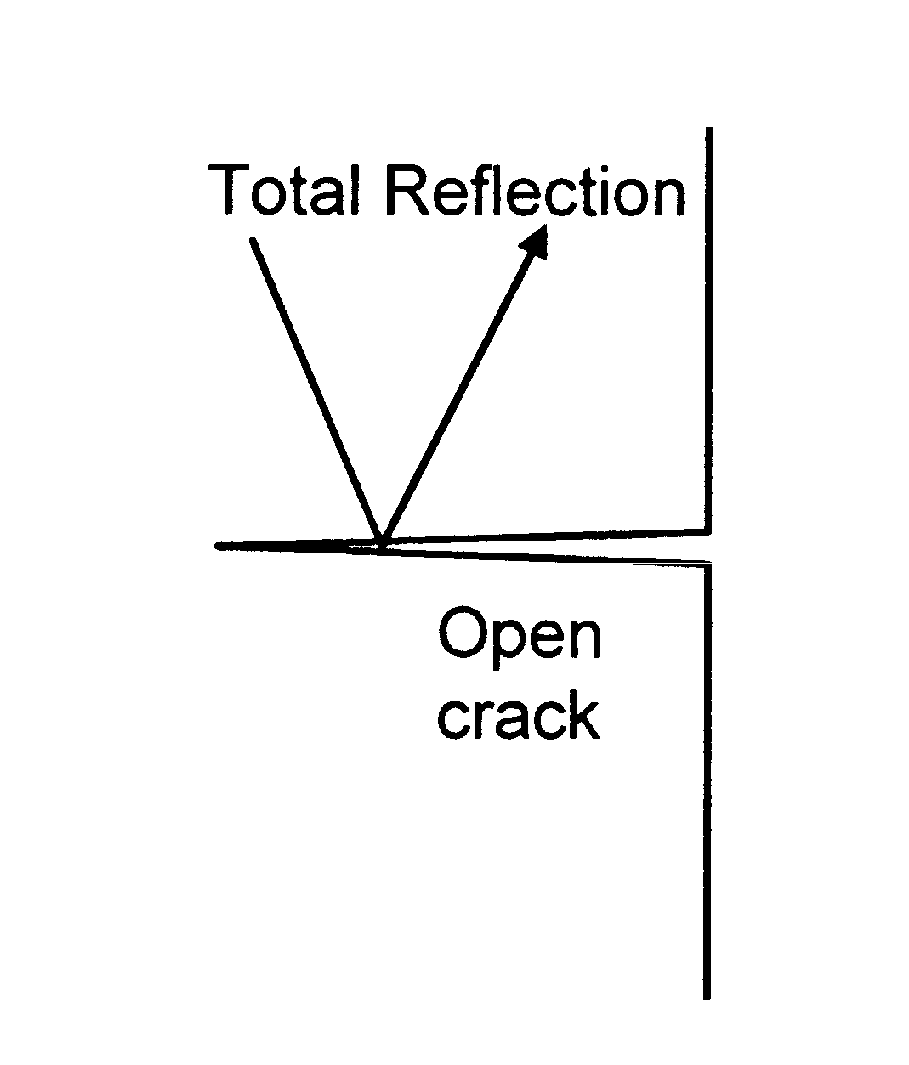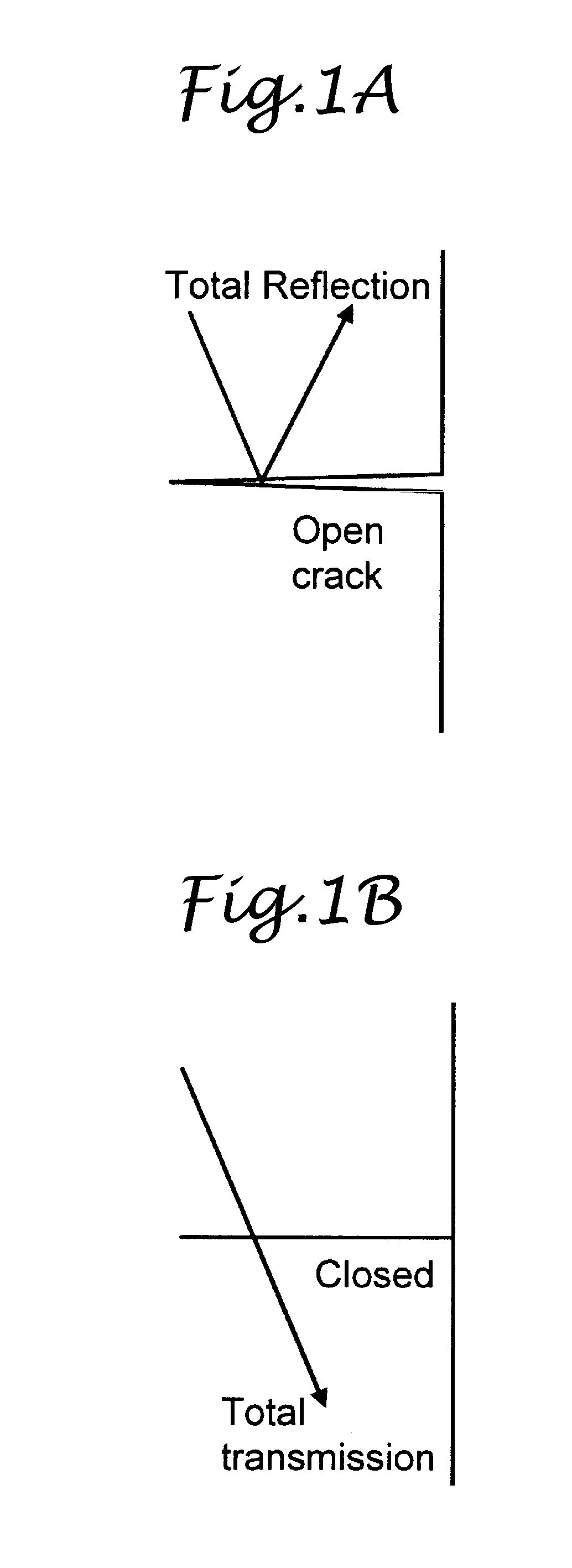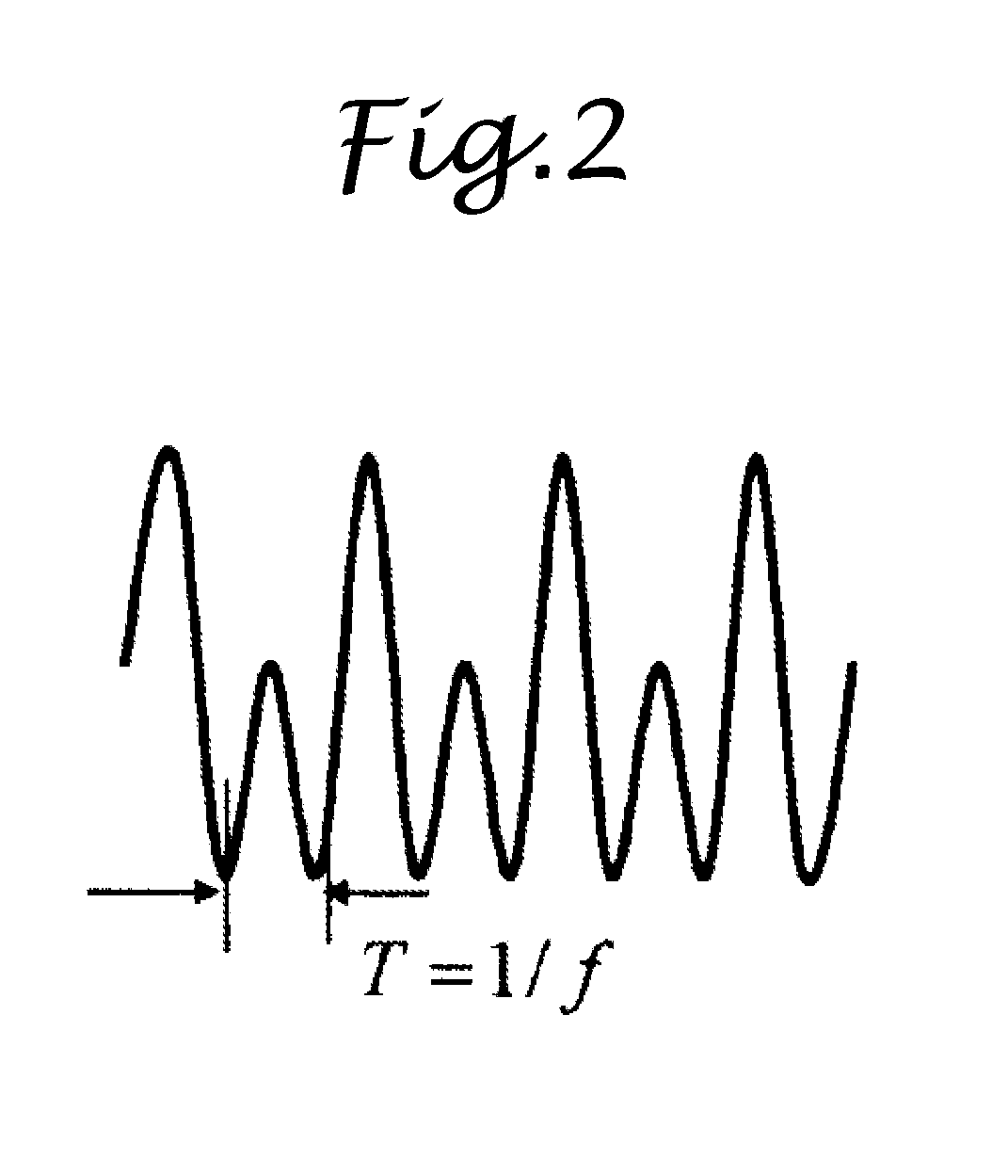Method and system for non-destructive testing
a non-destructive testing and method technology, applied in the field of methods and systems for non-destructive testing, can solve the problems of difficult conventional methods to detect obscure closed cracks, and achieve the effect of higher accuracy
- Summary
- Abstract
- Description
- Claims
- Application Information
AI Technical Summary
Benefits of technology
Problems solved by technology
Method used
Image
Examples
Embodiment Construction
[0032]Now, embodiments of a method and a system for non-destructive testing according to the present invention will be described in detail with reference to the accompanying drawings. FIG. 3 illustrates an example configuration of a non-destructive testing system of the present invention. Reference numeral 1 designates an object to be tested that is made of two rubber plates joined together. In this embodiment, a pulse entering section 2 configured to enter a single-pulse ultrasonic wave signal and a receiving section 3 configured to receive the incident single-pulse ultrasonic wave signal (or the single-pulse ultrasonic wave signal which has been entered into the object to be tested) are disposed to sandwich the object to be tested therebetween. An ultrasonic wave oscillator 4 transmits a pulse signal having a frequency of 1 MHz to 10 MHz and one or two periods to the pulse entering section 2. The pulse entering section 2 enters the single-pulse ultrasonic wave signal into the obje...
PUM
| Property | Measurement | Unit |
|---|---|---|
| frequency | aaaaa | aaaaa |
| angular frequency | aaaaa | aaaaa |
| instantaneous frequency | aaaaa | aaaaa |
Abstract
Description
Claims
Application Information
 Login to View More
Login to View More - R&D
- Intellectual Property
- Life Sciences
- Materials
- Tech Scout
- Unparalleled Data Quality
- Higher Quality Content
- 60% Fewer Hallucinations
Browse by: Latest US Patents, China's latest patents, Technical Efficacy Thesaurus, Application Domain, Technology Topic, Popular Technical Reports.
© 2025 PatSnap. All rights reserved.Legal|Privacy policy|Modern Slavery Act Transparency Statement|Sitemap|About US| Contact US: help@patsnap.com



